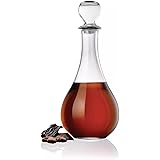Medicinal Plants: Unveiling Nature’s Pharmacopeia and Their Therapeutic Applications
The video above, through its visual narrative, offers a glimpse into the diverse world of medicinal plants and their various uses. While visual demonstrations provide an excellent foundational understanding, the profound complexity and scientific underpinnings of these natural compounds demand a more comprehensive exploration. Consequently, many professionals and enthusiasts alike grapple with navigating the vast, often disparate, body of knowledge surrounding botanical medicine, potentially hindering the full realization of its therapeutic potential.
To address this challenge, a rigorous, evidence-based approach to understanding phytochemistry and ethnopharmacology becomes indispensable. By integrating centuries of traditional wisdom with modern scientific methodologies, we can systematically identify, validate, and optimize the use of natural products. This article delves into the intricate science and historical significance of medicinal plants, offering an expert-level discourse on their journey from ancient remedies to contemporary pharmaceutical leads.
The Enduring Legacy of Medicinal Plants in Global Traditions
Across millennia, various cultures have meticulously documented and utilized medicinal plants, establishing intricate systems of traditional medicine. For instance, Traditional Chinese Medicine (TCM) and Ayurvedic medicine, two ancient practices, boast extensive formularies of botanicals employed for a wide array of ailments. The Yellow Emperor’s Inner Canon, dating back over two millennia, is a cornerstone text in TCM, detailing numerous herbal remedies and their energetic properties. Similarly, the Charaka Samhita in Ayurveda meticulously outlines the therapeutic applications of hundreds of plant species, emphasizing holistic well-being.
These traditional systems, though often steeped in empirical observation rather than reductionist scientific analysis, have proven remarkably resilient. Their sustained use has drawn significant interest from modern pharmacology, prompting extensive research into the biological activities of these botanical constituents. Indeed, the historical efficacy of many herbal remedies serves as a compelling starting point for contemporary drug discovery, highlighting a rich repository of untapped therapeutic potential.
Phytochemistry: The Science Behind Medicinal Plants’ Efficacy
The therapeutic properties of medicinal plants are intrinsically linked to their complex array of secondary metabolites. These organic compounds, synthesized by plants primarily for defense against herbivores, pathogens, or environmental stressors, include a diverse range of chemical classes. Prominent among these are alkaloids, flavonoids, terpenes, phenolics, and glycosides, each exhibiting unique pharmacological profiles.
Alkaloids, for instance, are nitrogen-containing compounds often characterized by potent physiological effects. Morphine from Papaver somniferum and quinine from Cinchona officinalis are classic examples, demonstrating significant analgesic and antimalarial activities, respectively. Flavonoids, a large class of polyphenolic compounds, are widely recognized for their antioxidant, anti-inflammatory, and cardioprotective properties. Quercetin, found in numerous fruits and vegetables, exemplifies the broad utility of these compounds in mitigating oxidative stress and inflammation.
Terpenes and terpenoids constitute another vast group, responsible for the characteristic aromas of many plants. Artemisinin, a sesquiterpene lactone derived from Artemisia annua, revolutionized malaria treatment. Moreover, the diverse structures within these phytochemical classes present a formidable challenge and opportunity for pharmacognosy—the study of medicinal drugs derived from natural sources. Understanding the biosynthesis and structural diversity of these compounds is crucial for isolating, characterizing, and ultimately synthesizing novel pharmaceutical agents.
From Field to Pharmacy: Modern Drug Discovery from Medicinal Plants
The journey of a medicinal plant extract to a pharmaceutical drug is a rigorous, multi-stage process. Ethnobotanical surveys, which involve documenting traditional uses of plants by indigenous communities, often serve as the initial phase in identifying promising candidates. This indigenous knowledge, accumulated over generations, provides invaluable leads for targeted investigation.
Subsequently, crude plant extracts undergo sophisticated phytochemical analysis. Techniques such as High-Performance Liquid Chromatography (HPLC), Gas Chromatography-Mass Spectrometry (GC-MS), and Nuclear Magnetic Resonance (NMR) spectroscopy are employed to isolate and identify specific active compounds. Once isolated, these compounds are subjected to extensive in vitro and in vivo pharmacological assays to determine their biological activity, mechanism of action, and potential toxicity. This involves evaluating their effects on various cellular targets, enzyme systems, and animal models to ascertain therapeutic efficacy and safety profiles.
Notable successes arising from this paradigm include the development of paclitaxel (Taxol) from Taxus brevifolia for cancer treatment, and vincristine and vinblastine from Catharanthus roseus, also significant anticancer agents. These examples underscore the profound impact that plant-derived compounds have had on modern medicine, showcasing nature’s unparalleled capacity to offer complex chemical structures that are often difficult to synthesize artificially.
Addressing the Challenges in Medicinal Plant Sourcing and Standardization
Despite the immense potential of medicinal plants, several significant challenges impede their broader integration into mainstream medicine. The issue of sustainable sourcing is paramount. Over-harvesting of wild populations, coupled with habitat destruction, threatens biodiversity and the availability of critical plant resources. For instance, the demand for endangered species like ginseng or certain orchids necessitates the development of sustainable cultivation practices and ethical wildcrafting protocols.
Furthermore, standardization of herbal products remains a complex hurdle. The chemical composition of a plant extract can vary significantly due to factors such as geographical location, soil conditions, harvest time, processing methods, and genetic variations within species. This variability makes it challenging to ensure consistent potency and efficacy across different batches or manufacturers. Analytical methods, including fingerprinting techniques, are critical for quality control, guaranteeing that the final product contains the specified active compounds within acceptable ranges.
Regulatory frameworks also play a pivotal role. The classification of herbal preparations, whether as foods, supplements, or drugs, varies widely across different jurisdictions, impacting their marketing claims and the level of scientific evidence required for their use. Addressing these multifaceted challenges requires a concerted effort involving botanists, chemists, pharmacologists, regulatory bodies, and local communities to safeguard these invaluable botanical assets for future generations, ensuring both their preservation and responsible utilization.







